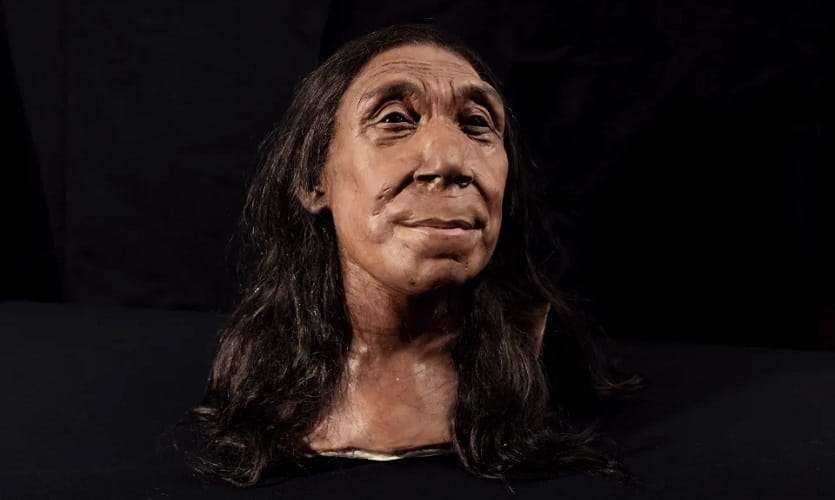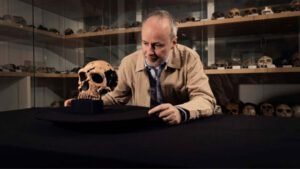The Recreation of the 75,000 Years Old Neanderthal Woman

A new Netflix documentary features the reconstruction of the face of a 75,000-year-old female Neanderthal using bone fragments from her shattered skull.
The documentary follows a group of archaeologists from the University of Cambridge and Liverpool John Moores University as they piece together the woman’s face from hundreds of bone fragments. Her remains were discovered in Iraqi Kurdistan in 2018 in a cave where Neanderthals were known to bury their dead.
Named Shanidar Z, the woman’s discovery shed light on the burial practices of Neanderthals. The documentary, titled “Secrets of The Neanderthals,” chronicles the team’s return to Shanidar cave for further excavations.
The Skulls of Neanderthals and Humans Look Very Different

Dr. Emma Pomeroy, a paleoanthropologist from Cambridge’s archaeology department, explained, “Neanderthal skulls look quite different from human skulls. They have large brow ridges, no chins, and a protruding midface, making their noses more prominent. However, the reconstructed face indicates that these differences may not have been as noticeable when they were alive.”
The skull had been shattered, possibly due to rockfall shortly after the individual’s death, and was flattened to about two centimeters thick by sediment when it was discovered by researchers. It’s believed that this find could be the top half of an individual unearthed in 1960.
Based on the teeth, researchers estimate that Shanidar Z was an older female, as some of her teeth showed significant wear, worn down to the root.
Shanidar Z Said to Have the Smallest Adult Arm Bones Among Fossils
Dr. Pomeroy explained, “Each skull fragment is carefully cleaned and stabilized with glue and consolidant, as the bone can be very soft, similar to a biscuit dunked in tea. It’s like solving a complex 3D puzzle, and it can take over two weeks to process a single block.”
Analysis of the site suggests that Shanidar Z was buried in a gully created by flowing water, which was further shaped by hand to accommodate the body. Her posture indicates that she was laid against the side, with her left hand under her head and a rock behind her head, resembling a small cushion.
Professor Graeme Barker, who leads the cave excavations, commented, “Shanidar Cave was used by both Neanderthals and our species, making it an ideal location to explore a major question in human evolution: Why did Neanderthals disappear as Homo sapiens spread to areas where Neanderthals had thrived for almost half a million years?”






